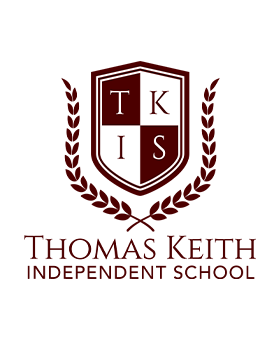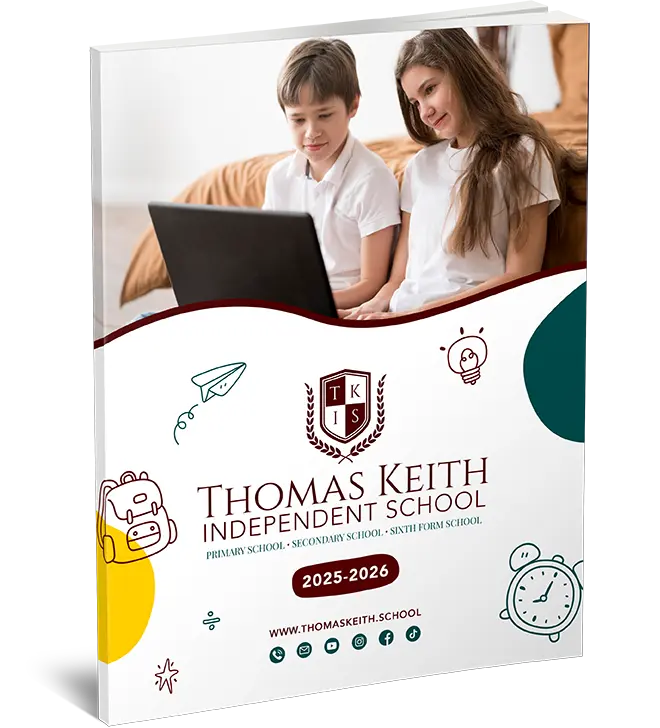
Media A Level Coursework
Media A Level Coursework: A Comprehensive Guide
This guide explains A level media coursework. It explains how students plan, research, produce, and evaluate media work. The guide uses simple language and clear sentences. Each section follows a subject-verb-object order. The text covers all key points and gives the example of Thomas Keith Online Independent School. The guide also includes a Frequently Asked Questions section and a Conclusion.
Below is a detailed discussion of A level media coursework.
Introduction
Media A Level Coursework asks students to study media theory and produce media content. Students work on projects that cover research, planning, production, and evaluation. Teachers mark the coursework using clear criteria. Students must show their skills in research, creativity, technical work, and analysis. This guide helps students understand each step of the coursework. It also shows how to use online examples. One such example is Thomas Keith Online Independent School. This school uses online programs to support media coursework. Their approach offers a model for clear and organized work.
Coursework Structure
Media A Level Coursework has several parts. Each part has a clear purpose. The coursework generally follows this order:
- Research
- Planning
- Production
- Evaluation
These steps ensure that students build their skills in a logical way. They learn to gather information, organize their thoughts, create media content, and then review their work.
Research
Students start by researching media theory and practice. They must find reliable sources. They learn to use books, articles, and online material. Research helps students understand key ideas. It also provides the background needed to make creative decisions later. Here are key points about research:
- Identify Reliable Sources:
Students use academic texts, educational websites, and trusted media studies guides. For example, the AQA Media Studies Guidelines and the OCR Media Studies Guidelines offer clear advice. - Gather Information:
Students take notes and record source details. This practice supports accuracy in citations. - Organize Data:
Students sort information by themes or topics. They group similar ideas together. This grouping helps them see patterns in media theory. - Form a Research Question:
Students frame a clear question. This question guides further research and helps them focus on a specific topic.
Planning
After research, students plan their work. Planning involves setting clear goals and creating a schedule. A good plan helps students manage their time. It ensures that each phase of the coursework receives attention. Here are the steps in planning:
- Set Objectives:
Students list what they want to achieve. They note the skills they will practice and the ideas they wish to show. - Create a Timeline:
Students develop a timeline for each phase. They set dates for finishing the research, planning, production, and evaluation steps. - Outline the Project:
Students write an outline. The outline includes key points for the media work. It helps them stay focused during production. - Allocate Resources:
Students note the equipment and software they will use. They decide on the tools needed for the project. This planning ensures that no detail is missed.
Production
The production phase is when students create their media content. The work can take many forms. It might include video, audio, digital design, or print media. Production is a creative step. Here are the key points:
- Choose a Format:
Students decide on the media format. They choose a format that best shows their ideas. - Use Media Tools:
Students use software and hardware to create their work. They learn the technical skills needed to produce quality content. - Implement Research:
The work must show evidence of research. Students include ideas and data from their research phase. - Follow the Outline:
The project must match the plan. Students follow the outline they prepared. This structure helps them remain organized. - Revise and Edit:
Students review their work. They check for errors and ensure clarity. Editing is an important part of production.
Evaluation
The final step in the coursework is evaluation. In this step, students review their work. They reflect on how well they met their goals. Evaluation shows the strengths and areas for improvement. Key points include:
- Self-Assessment:
Students assess their own work. They note what they did well and what needs improvement. - Use of Feedback:
Teachers and peers offer feedback. Students use this input to improve their work. - Link to Objectives:
Students explain how the work meets the objectives set at the start. They show clear connections between planning and production. - Future Improvements:
Students discuss what they would change in a future project. This reflection helps build skills for next time.
Skills Developed Through Coursework
A level media coursework builds several skills. The coursework provides a structured way to practice skills. Below are the key skills that students develop:
Research Skills
Students learn to search for and evaluate information. They become familiar with academic texts and reliable online sources. This skill helps them support their work with evidence. It also makes them better at organizing data.
Creative Skills
The coursework encourages creative thinking. Students learn to express ideas in clear ways. They use media formats to show their viewpoints. Creative skills include visual design, scriptwriting, and sound editing.
Technical Skills
Students practice using media tools. They learn to work with software for editing, designing, and producing content. Technical skills help them manage digital tools. This practice builds confidence in using modern technology.
Analytical Skills
The coursework requires students to think critically. They compare different media sources. Students evaluate the success of their work. Analytical skills help them make better decisions in future projects.
Communication Skills
Students learn to communicate ideas effectively. They write clear reports and create media content that tells a story. Communication skills help them explain their work. These skills are valuable in both academic and professional settings.
Assessment Criteria
Teachers assess A level media coursework using clear criteria. These criteria ensure that work is fair and thorough. The main points of assessment include:
Clarity of Research
Teachers look at how well students use reliable sources. They assess if students have gathered enough information. The clarity of research shows the depth of understanding.
- Accurate Citations:
Students must list all sources clearly. Accurate citations build trust in the work. - Relevant Data:
Teachers check if the data used is relevant to the topic. This relevance shows a good grasp of media theory.
Planning and Organization
The plan for the project is an important marker. Teachers look for a clear timeline and structured outline.
- Defined Objectives:
Clear objectives guide the project. They show that the student has a clear goal. - Step-by-Step Plan:
A detailed plan helps teachers see the project’s structure. It shows how each step leads to the next.
Production Quality
The quality of the media work is a major point of assessment. Teachers check if the work meets technical and creative standards.
- Media Format:
The choice of format should support the message. Teachers assess if the format fits the content. - Editing and Presentation:
The final product must be polished. Clear editing and proper presentation are important.
Evaluation
Evaluation shows if the student can review their work critically. Teachers assess how well students reflect on their project.
- Honest Self-Review:
Students must state what went well and what did not. This honest review helps identify strengths and weaknesses. - Link to Objectives:
The evaluation must show how the work meets the initial goals. It ties the process together.
Thomas Keith Online Independent School: A Case Study
Thomas Keith Online Independent School provides a clear example of successful media coursework. This school uses online platforms to support student work. The school has clear steps that match the coursework structure. Below is an in-depth look at their model.
Background
Thomas Keith Online Independent School offers education that meets modern needs. It supports media coursework by using digital tools. The school sets clear guidelines for each project phase. Teachers use online resources to guide research and production. This system helps students work at their own pace.
Research at Thomas Keith
At Thomas Keith, students start with thorough research. They use online libraries and digital databases. The school encourages the use of academic journals and trusted media studies sites. Students learn to note and organize their data. This method ensures that research is strong and supports the project clearly.
- Digital Resources:
The school provides links to reliable websites. These links help students verify their data. - Guided Research:
Teachers offer clear instructions on what to research. Students learn to ask the right questions.
Planning at Thomas Keith
The planning phase is important at Thomas Keith. Students use templates that list all steps. These templates cover research, planning, production, and evaluation. Students write clear outlines that show their project path.
- Clear Objectives:
Each project begins with a list of goals. These goals match the criteria set by media studies boards. - Timelines:
Students create timelines that detail each phase. They set dates and deadlines that help manage their time. - Project Outlines:
Outlines help students organize their work. Each outline breaks the project into smaller tasks.
Production at Thomas Keith
The production phase at Thomas Keith is well supported. Students use user-friendly tools for media creation. The school offers tutorials on video editing, sound design, and digital graphics. Production follows the plan exactly.
- Media Tools:
The school uses clear software tools. These tools include video editing programs and graphic design apps. - Step-by-Step Guidance:
Teachers offer guidance at every step. Students work through their outlines and check their progress. - Peer Reviews:
The school encourages peer reviews during production. Students share drafts and learn from each other.
Evaluation at Thomas Keith
Evaluation is a key part of the coursework at Thomas Keith. Students reflect on each project step. They use evaluation forms that ask clear questions. This practice builds a habit of self-review.
- Structured Reviews:
Students complete structured forms that ask what went well and what can improve. These forms ensure that evaluation is clear and honest. - Teacher Feedback:
Teachers offer feedback on both the project and the evaluation. This feedback helps students see their strengths and identify areas for change. - Documentation:
Students document their evaluation with written reports. These reports show a clear link between the project goals and the final work.
![]()
Detailed Coursework Steps and Tips
This section gives extra details on each step of the coursework. It offers tips that help students work clearly and efficiently.
Research: Detailed Steps
- Start with a Broad Search:
Students begin by searching for general media theory. They use academic databases and trusted educational websites. This search provides a strong base of ideas. - Narrow the Focus:
After gathering broad data, students focus on key points. They identify themes that match their project ideas. Narrowing the focus makes research more manageable. - Record Sources:
Students keep a record of all sources. They note the title, author, and publication date. This record helps during the evaluation and citation process. - Review and Summarize:
Students review the gathered material. They write short summaries for each source. These summaries make it easier to compare different views. - Organize by Theme:
Students group information by theme. For example, one group may cover theoretical ideas and another group practical applications. This grouping shows clear patterns in the data.
Planning: Detailed Steps
- Define the Project Goal:
Students write a clear goal statement. The statement explains what they aim to show with their work. - Break Down Tasks:
Students list the tasks needed for the project. They write each step in a clear and simple sentence. This breakdown helps in tracking progress. - Set Milestones:
Students set milestones for research, production, and evaluation. Each milestone has a clear deadline. - Allocate Time:
Students decide how many hours each task requires. They write a schedule that fits their daily routine. - Prepare an Outline:
An outline organizes the work into sections. Each section matches one step of the project. The outline helps students see the overall flow.
Production: Detailed Steps
- Select the Media Format:
Students choose the best format for their content. They decide between video, audio, digital images, or text. The choice must support their message. - Use Clear Tools:
Students use software that is easy to learn. They watch tutorials and follow online guides. - Draft the Work:
Students create a first draft of their media work. This draft helps them see what needs improvement. - Edit and Refine:
After drafting, students review and edit their work. They correct errors and improve clarity. This step is key to a polished final product. - Final Presentation:
The final product must be clear and well-edited. Students check that the work matches the project outline. They also verify that all research has been included.
Evaluation: Detailed Steps
- Write a Self-Review:
Students write a clear review of their work. They list strengths and weaknesses in simple language. - Collect Feedback:
Students ask teachers and peers for feedback. They note suggestions for improvement. - Compare with Objectives:
Students check if they met their goals. They compare their work to the initial objectives. - Plan for Improvement:
Students write what they would do differently next time. This plan helps build skills for future projects. - Document the Process:
Students keep a record of the evaluation. They include examples of changes made during production. This documentation shows growth and learning.
Resources and Support
Students need access to reliable resources during their coursework. Below are some useful online links and resources:
- AQA Media Studies Guidelines:
AQA Media Studies Guidelines
This guide explains the criteria for research, planning, production, and evaluation. - OCR Media Studies Guidelines:
OCR Media Studies Guidelines
This link offers clear instructions and assessment details for media coursework. - Online Libraries:
Many schools offer access to digital libraries. Students can find academic articles and journals through these libraries. - Tutorial Platforms:
Websites like Khan Academy, Coursera, or YouTube provide tutorials on media tools. Students can learn how to use video editing and graphic design software. - Peer Support Forums:
Online forums and study groups help students share ideas and review work. These platforms offer feedback and support.
Thomas Keith Online Independent School uses many of these resources. The school integrates online libraries, video tutorials, and peer review forums. This integration shows that online support can boost media coursework.
Benefits of a Structured Coursework Approach
A clear structure helps students complete their projects successfully. Below are some benefits of following the steps outlined in this guide:
- Improved Time Management:
A clear timeline helps students use their time wisely. Each step has its own deadline. - Stronger Research:
Organized research builds a strong foundation. Clear records of sources support the work. - Better Creativity:
A structured plan helps students focus on creative output. They can spend more time on production when they have a clear outline. - Clear Evaluation:
A detailed self-review helps students learn from mistakes. It builds skills for future projects. - Enhanced Technical Skills:
Working with media tools in a structured way builds confidence. Students learn to use software and hardware with ease. - Improved Communication:
A clear project structure makes it easier to explain ideas. Students write and speak in clear, simple language. - Professional Presentation:
Organized work is more likely to be well received. Teachers and examiners see the effort and clarity in each step.
Practical Tips for Success
This section offers practical tips that students can use to excel in A level media coursework.
Stay Organized
- Use a Project Notebook:
Write down ideas and tasks. A notebook helps track progress. - Keep Digital Files Tidy:
Organize files on your computer. Label folders clearly. - Use Calendars and Reminders:
Mark important dates on a calendar. Set reminders for deadlines.
Work on One Task at a Time
- Focus on One Step:
Complete one part of the project before moving on. This focus avoids confusion. - Review Each Phase:
Check that each part is complete. A clear review helps spot errors early.
Seek Feedback
- Ask Teachers Early:
Get feedback during the research and planning phases. Early advice helps prevent mistakes. - Use Peer Reviews:
Share drafts with classmates. Peer reviews offer fresh views.
Use Reliable Tools
- Select Trusted Software:
Use programs that are known for clear results. Trusted software supports quality work. - Watch Tutorials:
Learn from online guides. Tutorials provide step-by-step instructions.
Keep the Work Simple
- Use Clear Sentences:
Write short sentences that state clear ideas. Avoid long and confusing sentences. - Check for Clarity:
Read your work aloud. This check helps spot unclear sections. - Avoid Unnecessary Words:
Stick to words that add clear meaning. Do not use extra adjectives or complex phrases.
Frequently Asked Questions (FAQ)
Below are common questions that students ask about A level media coursework.
Q1: What is A level media coursework?
A1: A level media coursework is a project where students research media theory, plan a media project, produce content, and evaluate their work. The project tests research, creative, technical, and analytical skills.
Q2: How should I start my research?
A2: Start by searching for academic texts and trusted websites. Use digital libraries and reliable online sources. Keep a record of all the information and sources you use.
Q3: What are the main steps in the coursework?
A3: The main steps are research, planning, production, and evaluation. Each step builds on the previous one. They help structure the project clearly.
Q4: How do I plan my project?
A4: Write a clear goal statement. Break the project into tasks. Set a timeline with deadlines. Create an outline that shows each part of the work.
Q5: What skills does this coursework help me develop?
A5: The coursework builds research, creative, technical, analytical, and communication skills. It helps you manage time and work systematically.
Q6: How can I use online resources effectively?
A6: Use digital libraries, academic journals, and educational websites. Watch tutorials on video editing or graphic design. Peer support and online forums also offer help.
Q7: What is the role of evaluation?
A7: Evaluation helps you review your work. It shows what went well and what needs improvement. A clear self-review supports growth and future projects.
Q8: How does Thomas Keith Online Independent School support media coursework?
A8: The school uses online platforms to guide research, planning, production, and evaluation. It offers clear templates, digital resources, and peer review systems to support students.
Conclusion
A level media coursework requires clear research, careful planning, precise production, and honest evaluation. The coursework builds essential skills. It teaches research, creative expression, technical work, and analytical review. Following a structured approach helps students manage their time and produce quality work.
Thomas Keith Online Independent School provides a good example of how to run a media coursework program. The school uses online tools and clear guidelines. It helps students work step by step. Their method shows that digital platforms can support academic projects effectively. By using clear templates and digital resources, students can focus on learning and producing quality media content.
This guide has covered every part of the coursework. It explains each step in clear, simple language. The steps include research, planning, production, and evaluation. The guide also offers practical tips and answers common questions. The goal is to help students succeed in A level media coursework. The clear structure and precise language make it easier to follow. Students are encouraged to use the tips and guidelines provided. By doing so, they can achieve clear results and build strong media skills.
In summary, A level media coursework is a well-defined project that builds key skills. The process of research, planning, production, and evaluation gives a clear path to success. Using reliable online resources and simple methods makes the work clear and accessible. Students can use this guide as a reference when planning their projects. It helps in understanding each step and using resources effectively. With clear instructions and organized steps, students can produce high-quality media work that meets all the assessment criteria.
This comprehensive guide has now provided a detailed explanation of A level media coursework. It includes an in-depth look at each phase of the project. It also gives a clear example from Thomas Keith Online Independent School. Students can use the guide as a roadmap. It supports the work from start to finish. The guide ensures that every aspect is clear and accessible. Following this guide will help students achieve success in their media studies.
Use the links provided for further details and support from trusted sources. Make sure to review each step and check your progress. With focused effort and clear guidance, you can complete your media coursework confidently and effectively.
By following the clear steps outlined in this guide, you build strong research, planning, production, and evaluation skills. These skills will serve you well in both academic and future professional work. The example from Thomas Keith Online Independent School shows that a clear, structured approach can work well in online education. This model offers a practical framework that you can adapt to your own projects.
We hope this guide provides the information you need to succeed in A level media coursework. Remember to keep your work organized, use reliable sources, and follow a clear plan. Your final product should reflect your hard work and understanding of media theory and practice.





